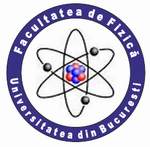| |
 |
UNIVERSITY OF BUCHAREST
FACULTY OF PHYSICS Guest
2025-10-05 22:39 |
 |
|
|
|
Conference: Bucharest University Faculty of Physics 2025 Meeting
Section: Atmosphere and Earth Science; Environment Protection
Title:
Co-Exposure to Chemical and Biological Air Pollutants in Southeastern Romania
Authors:
Bianca Mihalache (1), Ana-Maria ROSIANU (1), Gabriela Iorga (2,1)
*
Affiliation:
1) University of Bucharest, Faculty of Physics, Str. Atomistilor 405, Magurele, 077125 Bucharest, Romania
2) University of Bucharest, Faculty of Chemistry, Bd. Regina Elisabeta 4-12, 030018 Bucharest, Romania
E-mail
mhl.bianca10@gmail.com
Keywords:
Air pollution, Biological pollutants, Health risk assessment, Air quality monitoring, Southeastern Romania
Abstract:
Recent decades have revealed significant climate shifts and increasing air pollution across Southeastern Romania (SERO), particularly in urbanized regions like Bucharest. This study integrates temporal, spatial, and health risk analyses of both chemical (PM₁₀, PM₂.₅, NO₂, CO, SO₂, O₃) and biological (Ambrosia pollen) pollutants. We analyzed time series data from the Romanian Air Quality Monitoring Network (RAQMN), encompassing 59 monitoring stations across varied environments, and conducted a focused seasonal health risk assessment in two contrasting Bucharest zones: Cismigiu and Mihai Bravu.
For temporal trends, we employed the Mann–Kendall and Theil-Sen methods using R’s Openair package. Spatial interactions were analyzed using Python-based statistical tools to compute Local Indicators of Spatial Association (LISA) and Moran’s I. Principal Component Analysis identified major pollution sources, and a distinct O₃ weekday–weekend effect was observed in a mid-sized petrochemical city.
In parallel, non-carcinogenic health risks during Ambrosia’s blooming season (2014–2019) were quantified using the Hazard Quotient (HQ) method. Ambrosia pollen levels, measured via the Hirst-type method, were found to coincide with elevated NO₂ and PM₁₀ concentrations, significantly raising health risks, particularly for sensitive populations.
Our findings underscore pollutant-specific spatial interactions and highlight the compounded public health threat from co-exposure to chemical and biological pollutants. The study advocates for integrating aerobiological monitoring into existing air quality networks and encourages public communication of seasonal HQ risk levels. This comprehensive approach supports more targeted local and regional air quality and health protection strategies.
|
|
|
|